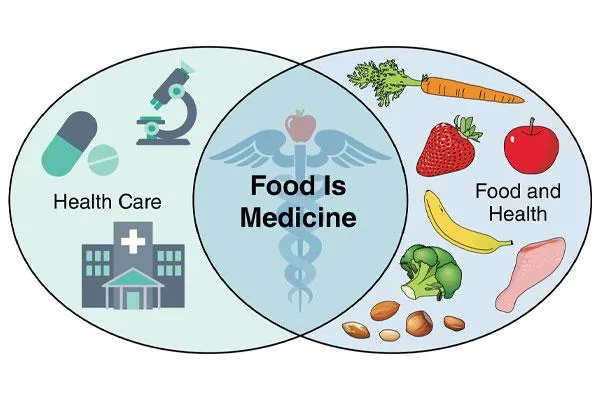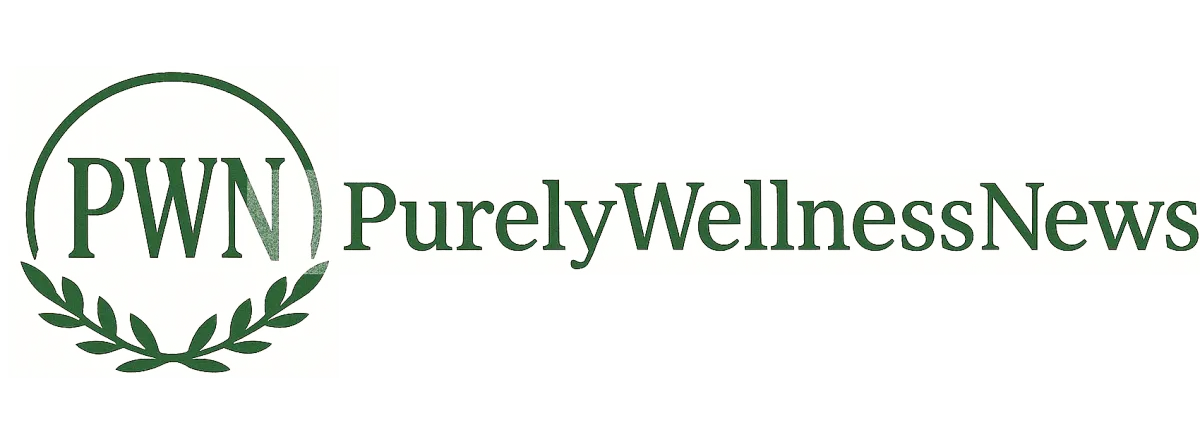
PWN Wellness Trends Aug 24 2025
Food as Medicine: How America Is Relearning That Meals Shape Health
Food is no longer just fuel or enjoyment for many Americans—it’s a clinical tool. The “Food as Medicine” movement reframes diets, groceries, and meals as part of prevention, treatment, and recovery for chronic disease. From produce prescriptions and medically tailored meals (MTMs) to hospital-based food pharmacies and clinician-led nutrition counseling, this movement is changing how patients, health systems, payers, and retailers think about food.
Medical note: This article is educational and not a substitute for individualized medical advice. People with specific medical conditions should consult their clinician or registered dietitian.
What “Food as Medicine” Means Today
At its core, Food as Medicine (FAM) is the intentional use of real food to prevent, manage, or treat disease. That can include:
Medically Tailored Meals (MTMs): Fully prepared meals designed to meet the nutritional needs and medical constraints of patients (e.g., heart-healthy, renal, diabetes-appropriate), often delivered to homebound or high-risk patients.
Produce Prescriptions: Vouchers or allowances for fruits & vegetables provided by clinics, community programs, or insurers.
Food Pharmacies / In-clinic Markets: Onsite food dispensaries or pop-up markets where clinicians “prescribe” groceries and patients obtain them in the clinic or pharmacy.
Culinary Medicine & Rx Cooking: Clinician training programs that teach how to counsel patients, and community classes that teach patients to prepare therapeutic meals.
Nutrition Integration in Care Pathways: Systematic screening, referral to dietitians, and food supports embedded in care for diabetes, heart disease, cancer survivorship, and more.
Why It’s Trending: Drivers & Consumer Signals
Rising Chronic Disease Burden: Diabetes, heart disease, obesity, and nonalcoholic fatty liver disease (NAFLD) are top drivers of healthcare costs; food interventions address root drivers.
Evidence & Pilots: Growing pilot studies show clinical and utilization benefits for targeted populations (e.g., reduced healthcare utilization with MTMs and produce-prescription models).
Health Equity Focus: Food interventions directly address social drivers of health—food insecurity and access—making them politically and clinically attractive.
Payer & Policy Interest: Employers, Medicaid pilots, and some private insurers are experimenting with coverage for MTMs and produce incentives to reduce downstream costs.
Consumer Demand: Shoppers want practical, healthcare-grade food solutions—convenience, clarity on health outcomes, and simple ways to eat better.
Technology & Logistics: Meal providers, delivery platforms, and interoperability (referrals, outcome tracking) make scale more feasible.
The Science: What Works (and Where Evidence Is Strongest)
A few evidence highlights and mechanisms (summarized — dose, population, and program design matter):
Dietary patterns matter most. Multiple lines of evidence support the Mediterranean, DASH, and MIND patterns for reduced cardiovascular disease, stroke, and cognitive decline risk. These whole-diet patterns—rich in vegetables, whole grains, legumes, nuts, fish, and olive oil—are the backbone of many food-as-medicine programs.
MTMs for high-risk patients: Randomized and quasi-experimental pilots show MTMs linked to improved clinical outcomes (better glycemic control, blood pressure, medication adherence) and reductions in hospital readmissions and emergency visits in selected high-risk, food-insecure groups. (Results depend on targeting and dose.)
Produce prescriptions have demonstrated improvements in fruit/vegetable intake and some metabolic markers in short-term studies; longer follow-up and larger trials are growing.
Culinary medicine & counseling improve dietary behaviors and patient confidence to implement changes; clinician training increases the frequency and quality of nutrition counseling.
Food + behavior + clinical support works best. Food interventions paired with education, care coordination, and follow-up yield larger and more durable effects than food alone.
Mechanisms: improved glycemic control, lower blood pressure, reduced systemic inflammation, improved lipid profiles, weight loss (when appropriate), and improved medication adherence via symptom control.
Models of Delivery (How Health Systems & Communities Implement FAM)
Referral → Meal Delivery (MTM): Clinician screens, refers to vendor or in-house kitchen; MTMs delivered to patients with complex needs (e.g., heart failure, severe diabetes).
Produce Prescription Programs: Clinic issues vouchers/cards redeemable at farmers’ markets, grocers, or program partners; often paired with education.
Food Pharmacies/In-Clinic Markets: Clinics stock curated, clinician-recommended staples; patients “fill” prescriptions onsite.
Medically Integrated Meal Kits / Grocery Boxes: Lower-cost option—ingredient boxes with recipes tailored to therapeutic goals.
Community Partnerships: Health systems coordinate with food banks, community health workers, and local farms to reach hard-to-serve groups.
Employer/Insurer Programs: Wellness benefits include grocery stipends, nutrition coaching, or delivery services for members with qualifying conditions.
U.S. Market Implications & Economic Considerations
Growing Market: Health-system investments, insurer pilots, and DTC meal providers are expanding the market for clinically designed food products.
Business models: Diverse—subscription MTMs, prescription-driven reimbursement, public–private pilots (Medicaid waivers), employer wellness contracts, and retail partnerships.
Cost vs. ROI: MTMs can be expensive per person/month but may be cost-effective in high-utilizer populations by preventing admissions/readmissions and stabilizing chronic disease. ROI depends on appropriate targeting (high-risk, food-insecure, recently discharged).
Retail & Grocery: Supermarkets and grocers are partnering with health systems to accept produce prescriptions and to curate “healthful Rx” aisles.
Technology Enablers: Referral platforms, outcome dashboards, subscription logistics, and interoperable billing models are key scale drivers.
Policy & Reimbursement: Local & state Medicaid pilots, value-based contracts, and employer health plans are starting to underwrite FAM services, but national-level coverage for MTMs remains uneven.
Equity & Access: Opportunity and Pitfalls
Opportunity: FAM directly reduces food insecurity and improves access to nutrient-dense food in underserved communities—resulting in equitable health gains if designed inclusively.
Pitfalls: Programs that require smartphones, digital literacy, or complex redemption can widen gaps. Culturally tailored menus, language access, and local partnerships are essential.
Sustainability: Short pilots can show improvements, but sustaining benefits requires long-term funding models and integration into care pathways.
Barriers to Scale
Reimbursement Complexity: Lack of universal billing codes and variable payer willingness limits adoption.
Logistics & Cost: Fresh-food sourcing, delivery to remote areas, and customization increase program costs.
Clinical Integration: Screening and referral workflows must be embedded into clinician workflows to be used routinely.
Evidence Gaps: While short-term pilots are promising, more large, pragmatic RCTs and long-term cost-effectiveness data are needed for broad payer adoption.
Regulatory/Labeling: Claims around disease treatment must be careful—most programs operate under nutrition/food rules, not pharmaceutical frameworks.
Practical Roadmap: How Health Systems & Employers Can Start
Screen for Food Insecurity & Nutrition Risk: Use brief, validated tools in primary care and discharge planning.
Pilot Targeted MTM or Produce Rx: Start with a high-risk cohort (recently hospitalized for heart failure, uncontrolled diabetes) and measure utilization and readmissions.
Build Local Food Partnerships: Partner with food banks, meal vendors, and community orgs for culturally relevant menus and logistics.
Layer Education & Navigation: Combine food supports with RDN counseling, culinary skill classes, and community health worker follow-up.
Define Metrics: Track food security, diet quality, A1c/BP/cholesterol where relevant, utilization (ED visits/hospitalizations), and patient experience.
Explore Reimbursement Paths: Pilot under value-based arrangements, Medicaid waivers, or employer health benefits; document ROI.
Consumer Insights: What Patients Want
Taste & Convenience: Clinically optimized food must also be appetizing and easy—people won’t eat food they don’t like.
Cultural Fit: Menus need cultural authenticity (spices, preparation styles) to drive adherence.
Clarity & Trust: Simple labeling, portion guidance, and clinician reinforcement increase uptake.
Choice & Dignity: Allow choice and flexibility rather than one-size-fits-all allocations.
Privacy & Respect: Stigma around food aid must be minimized through normalized clinical pathways.
Case Examples (Generalized Models — for illustration)
Hospital Discharge Program: Patients discharged after heart-failure hospitalization receive 4 weeks of MTMs plus telephonic dietitian follow-up; program aims to reduce 30-day readmissions.
Clinic Produce Rx: Community clinic issues $40/week e-vouchers for 8 weeks redeemable at local grocer; includes two cooking demos and follow-up.
Employer Benefit Pilot: Large employer offers employees with prediabetes a 3-month grocery stipend plus nutrition coaching; aims to reduce A1c drift and improve productivity metrics.
What to Watch Next (12–36 months)
Medicaid & Medicare pilots expanding coverage of MTMs under value-based models.
Standardized outcome measures and registries to produce stronger ROI evidence.
Integration with digital therapeutics and CGM/biomarker feedback loops to personalize food prescriptions.
Retail adoption—grocers partnering at scale to accept prescriptions and curate healthful baskets.
Practical Tips for Clinicians & Patients
For clinicians:
Screen for food insecurity routinely.
Keep a vetted list of local food supports and meal vendors.
Refer to RDNs and use brief counseling scripts focused on incremental change.
For patients:
Start with one reliable change (e.g., add a veggie at lunch every day).
Use simple swaps (whole-grain for refined, beans twice weekly for protein, fatty fish weekly).
If eligible, ask your clinic about produce vouchers or meal programs.
Quick FAQ
Q: Do MTMs actually save money?
A: In targeted high-risk groups, evidence suggests MTMs can reduce acute care utilization; ROI depends on program design and population.
Q: Who pays for these programs?
A: Mixed funding models: grants, Medicaid pilots, employer benefits, insurer pilots, and sometimes patient cost-share.
Q: Are food prescriptions just for the food-insecure?
A: No—food prescriptions can help a range of patients (post-hospital, chronic disease) but food insecurity is a primary target for equity gains.









